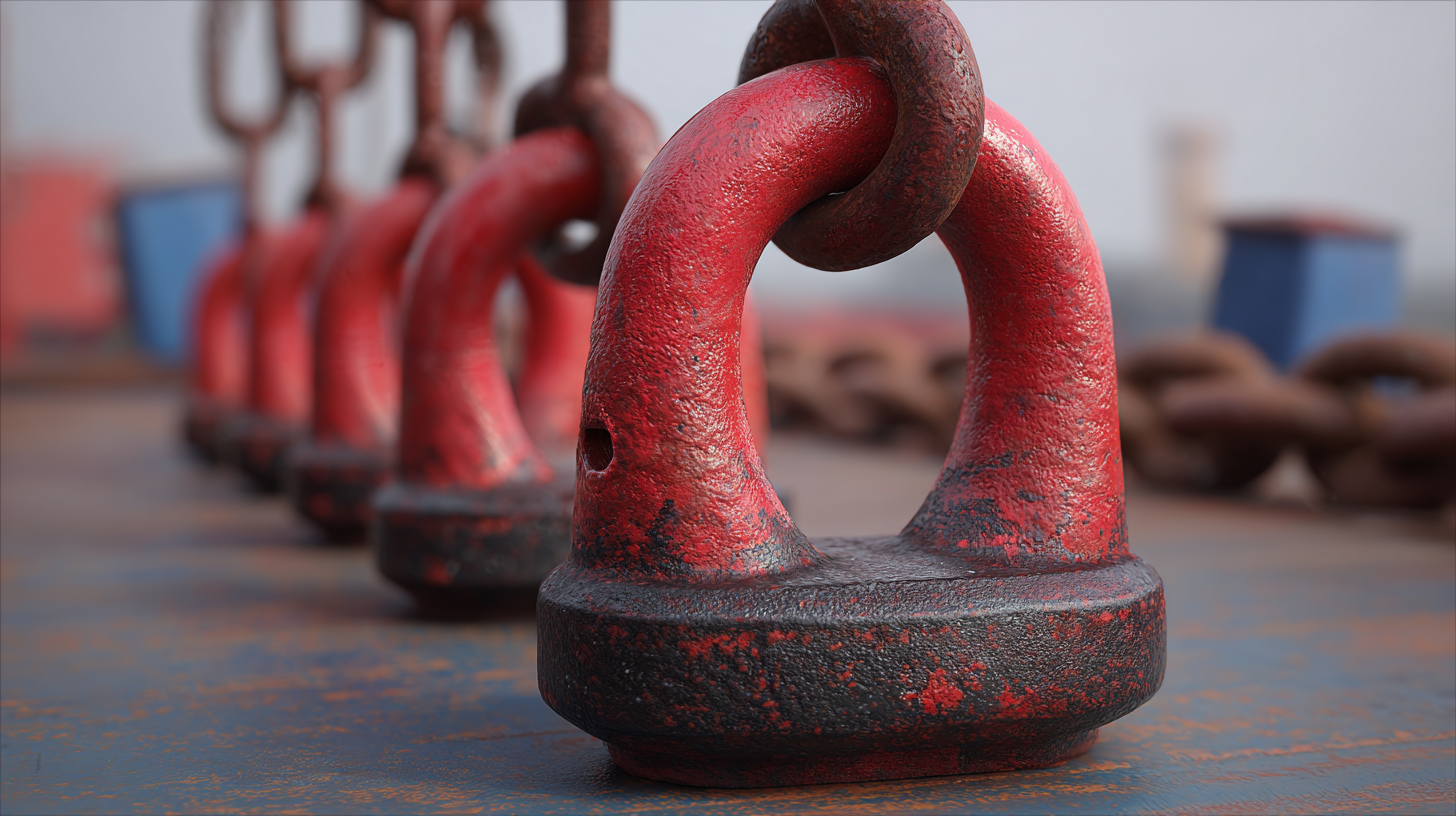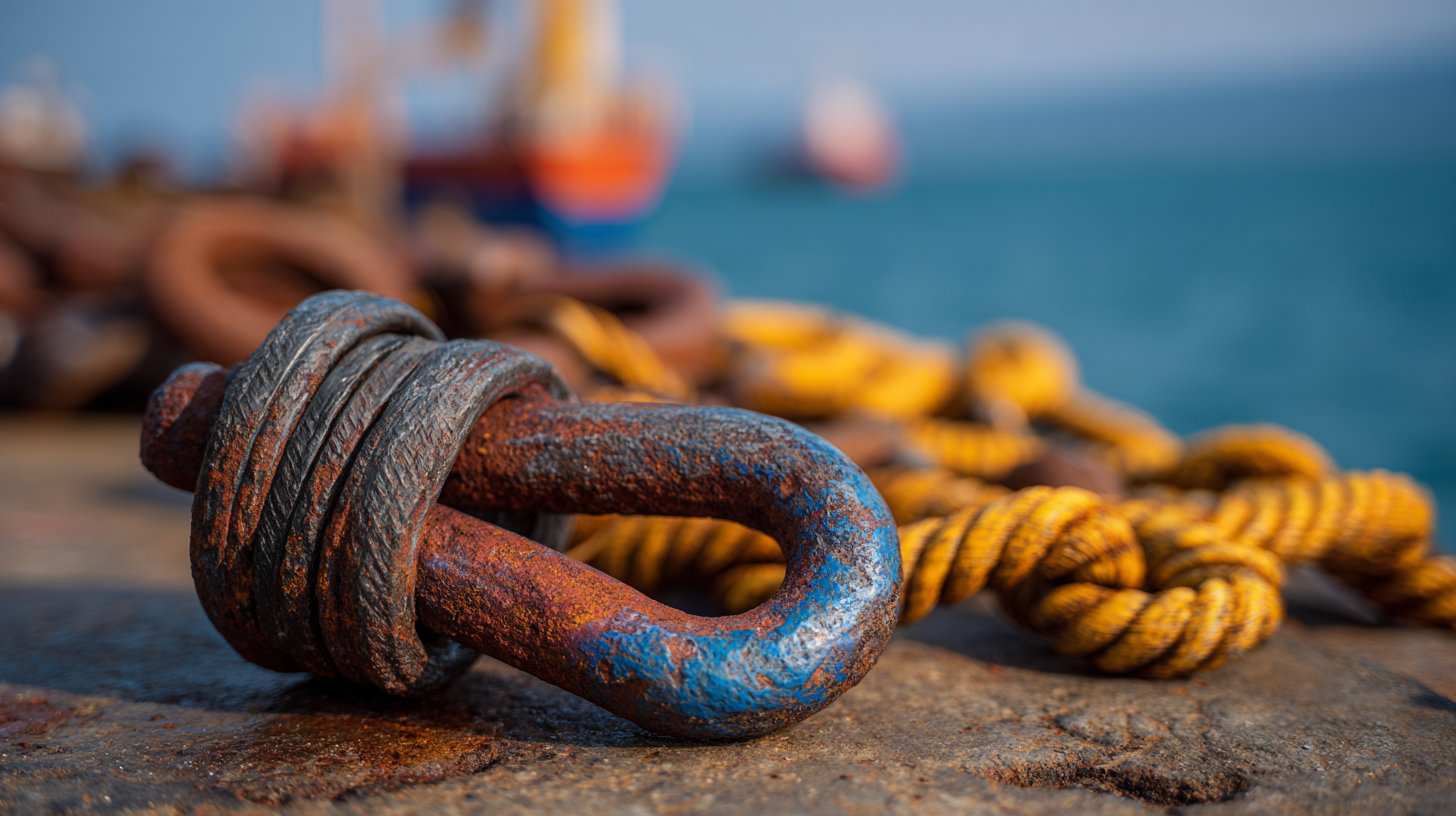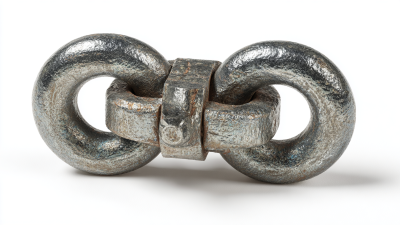Anchor shackles are critical components in marine applications, essential for securely connecting chains, ropes, and other rigging hardware. Understanding their load capacity and safety factors is paramount, especially given that over 50% of marine accidents are attributed to equipment failure, as highlighted in the latest Marine Safety Report by the International Maritime Organization (IMO).

The load capacity of an anchor shackle varies based on its design, material, and size, which can range from 1 ton to over 100 tons, necessitating careful selection for specific applications. Moreover, safety factors typically employed in the marine industry often include a ratio of 5:1 or greater to ensure operational safety under dynamic loads. Awareness of both the working load limits (WLL) and the safety factors associated with anchor shackles can vastly improve safety outcomes and operational efficiency in marine environments. This article will delve into essential tips and guidelines for selecting and utilizing anchor shackles effectively within these demanding settings.
When engaging in marine applications, understanding anchor shackle load ratings is crucial for ensuring safety and efficiency. Anchor shackles, widely used in rigging and mooring operations, are rated according to their load capacity, which directly correlates to the weight they can safely bear during use. Manufacturers typically assign a Working Load Limit (WLL) to each shackle, which is essential for preventing accidents that may arise from overloading. Users should always consult this rating to select the appropriate shackle for specific applications, taking into account the dynamic forces that may be applied.
Additionally, it is important to consider the safety factor associated with anchor shackles. The safety factor is the ratio of the shackle's ultimate breaking strength to its WLL. A common safety factor ranges from 5:1 to 6:1, meaning that the shackle should be able to withstand five or six times its rated load before failure occurs. This buffer serves as a safeguard against unforeseen stresses and wear that can occur in marine environments. Therefore, both the load ratings and safety factors must be thoroughly understood and adhered to when using anchor shackles, ensuring the integrity of operations and the safety of personnel involved.
The load capacity of anchor shackles used in marine applications is influenced by several key factors. Material composition is one of the primary determinants, as shackles are typically made from high-strength steel to withstand the harsh marine environment. According to the International Organization for Standardization (ISO) 4826, the minimum tensile strength of marine shackles can reach up to 60 tons, depending on their size and grade. The corrosion resistance of the material also plays a significant role, as shackles exposed to saltwater can experience degradation over time, reducing their effective load capacity.
Another crucial factor is the design and manufacturing process of the shackles. High-quality shackles often undergo rigorous testing to meet standards set by organizations such as the American National Standards Institute (ANSI), which ensures that they can safely handle their rated loads. Furthermore, the way shackles are used during rigging operations can impact their load capacity. It is estimated that improper alignment or overloading can decrease the effective capacity by as much as 25%. Therefore, understanding these factors is essential for ensuring the safety and reliability of operations in marine environments.
When selecting the right anchor shackle for marine applications, safety should always be the top priority. The load capacity of a shackle is crucial; ensure that it can handle the maximum weight your application demands. Look for shackles labeled with their working load limit (WLL) and choose one rated for at least 1.5 times the load you expect to encounter. This safety factor is essential to prevent failures that could lead to accidents.
Additionally, consider the material of the shackle. Stainless steel and galvanized options provide excellent corrosion resistance, which is vital in marine environments. It’s also important to check for any signs of wear or fatigue, as even slight damage can compromise safety. Keep your shackles properly maintained and inspect them regularly, replacing any that show signs of degradation.
Lastly, familiarize yourself with different types of shackles available. Bow shackles offer versatility and are ideal for multi-directional loads, while D shackles are typically stronger for single direction pulls. Understanding these distinctions can greatly enhance your safety measures when securing loads on the water.
When it comes to using anchor shackles in marine applications, common mistakes can significantly compromise safety and performance. One prevalent error is failing to properly assess the load capacity of the shackle in relation to the expected load. According to the American Bureau of Shipping, many incidents occur due to the misuse of shackles that do not conform to the working load limit (WLL). Each shackle should be selected based on its WLL, which is often listed on the shackle itself in accordance with ISO standards. It is critical to choose shackles that are rated higher than the expected load to ensure a margin of safety.

Another frequent mistake is neglecting the importance of proper alignment and installation. Misalignment can drastically reduce the effective load capacity of the shackle, leading to premature failure. Research conducted by the International Marine Contractors Association emphasizes that a shackle misaligned by only a few degrees can experience a reduction in strength of up to 30%. Additionally, using worn or damaged shackles can further compromise safety. A study by Lloyd's Register found that up to 15% of marine accidents involving mooring failures were linked to inadequately inspected or improperly maintained equipment. Thus, regular checks and adherence to best practices are essential for ensuring the integrity of anchor shackles in marine operations.
When it comes to maintaining the safety and reliability of anchor shackles in marine applications, adhering to best practices is essential. Regular inspections are critical; visually check for signs of wear and corrosion, as these can significantly affect the load capacity. Additionally, ensure that the pin and shackle body align properly without any deformation.

Tips: Make it a routine to clean the shackles after each use, especially after exposure to saltwater. This simple step helps prevent the buildup of corrosion and prolongs the life of your equipment.
Proper lubrication is another key aspect of shackle maintenance. Use a marine-grade lubricant on the pin threads to reduce wear and make it easier to screw and unscrew during use. Avoid over-tightening, which can lead to stress fractures and jeopardize safety.
Tips: Consider implementing a monthly maintenance schedule that includes checks on the shackles, alongside a detailed record of usage and inspections. This approach ensures proactive management of equipment safety.






